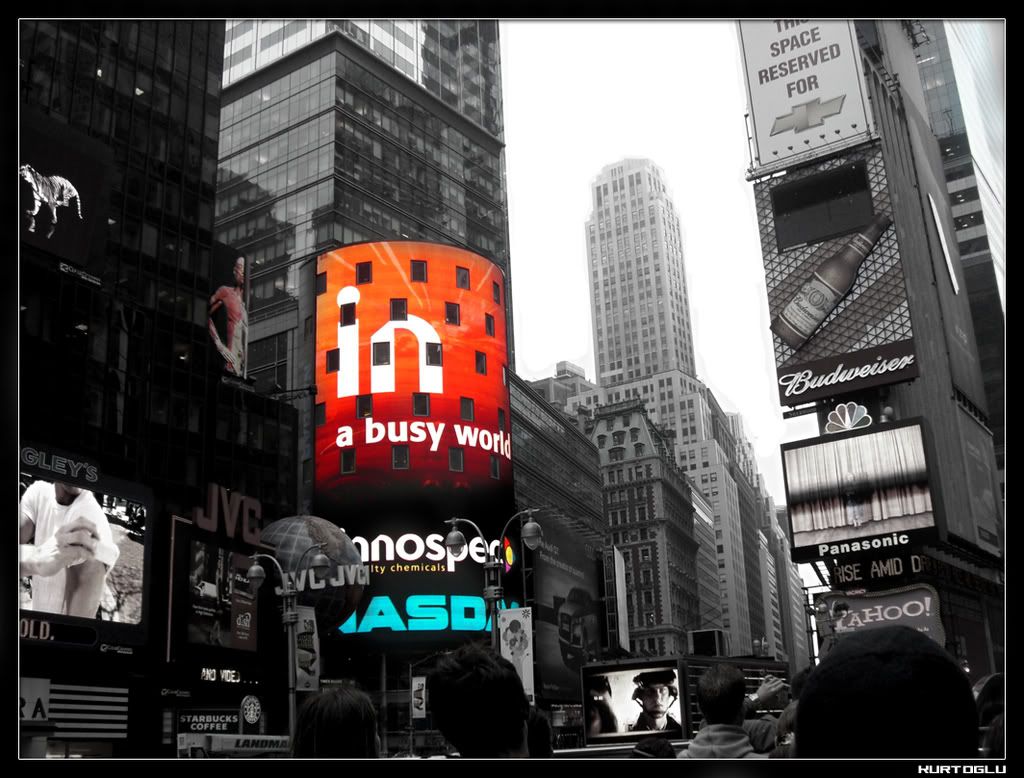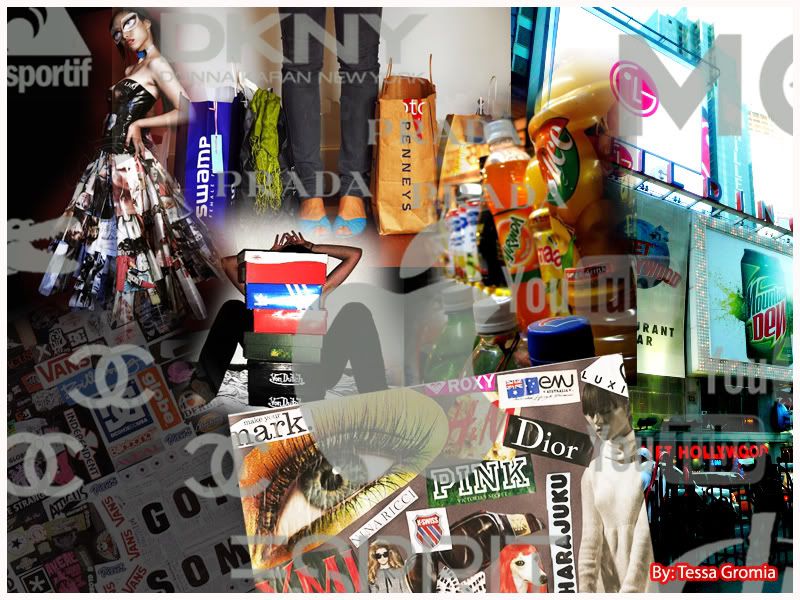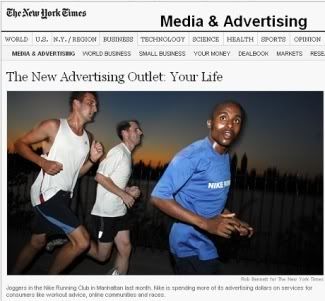Dallas Smythe talked about mass media and advertising and how it is well interpolated into the lives of the consumers. The main argument of Smythe is that the audience is unaware that every aspect of their life is under the lens of an 'industry' where ratings monopolists, mass media monopolists and advertisers battle each other to reap more benefits than the other.
WELCOME TO MY COURSE and MY FUTURE JOB:

1.) What is advertising for the advertisers?
For the educational purposes, marketing is defined as the relationship between consumers and companies. By relationship this means nurturing and putting a face in a product. Advertising refers to delivering the MESSAGE. However, this is what Smythe refers as one of the subjective mental entities divorced from the reality that is really happening.
When you are and advertiser, what marketing really means is for the companies to know their consumers very well in order for the consumers to trust (in Marketing terms, trust = for consumers to give us their money). Therefore, advertising is actually a particular brand's expression in order to create an impression to its target consumers.
Advertising is all about finding the connection between the natural yearning of a target market and how to make it fit through mass media.
Below is a collage I've made about how advertising is present in the whole purchase process:

Where is the role of advertising fit in this whole process? According to Smythe, the "work" of the audience taking place in the head of the audience members. Looking at the chart above, advertising is indeed present in every step of the whole purchase process.
First, during need recognition, the role of advertising is to make the audience aware of their dormant need. For example, hunger. Second, with information research, the audience is given the different choices that are available to address his need. Third, in evaluation and comparison, advertisements help one decide to make an educated decision on which one to choose (e.g. choice of restaurant to buy food). Fourth, in outlet selection, 'directory advertising' helps the audience or directs the audience where to avail the product (e.g. a billboard ad showing all the outlets of Jollibee's in Quezon City). Fifth, during actual purchase, the audience is still heavily bombarded with advertisements to convince him o buy. Thus, POP (point of purchase) advertising such as gondolas, small TV showing the ads, floor stickers can be seen frequently. Packaging is also actually a last effort to advertise! Lastly, during the post-purchase evaluation, this is where loyalty is formed to get the audience to repurchase. Thus, advertisements inside a restaurant, for example, reaffirms that the audience has made the right decision.
Looking at it closely, advertising works wonder in the minds of their target market. Thus, this is where advertisers and capitalists generate revenue from. Brand positioning, for example, is defined as the part that a particular brand occupies in the head of their target consumers/audience. The mind can be also identified as CONSCIOUSNESS as what Smythe calls it. And, the most significant effect of advertising through mass media is INFLUENCE - influence on the mind of the audience by penetrating every aspect of the life of their target market.
If consumers or the audience as Smythe calls it will be aware that they are indeed the 'audience', this will raise protests among them. Who wants to be tracked down by capitalists and market research agencies for the purpose of finding new ways to reap revenues? However, as a Marketing student, myself; the issue is identifying the line between invasion of privacy and merely doing my job.
2.) Creating the "Love Mark", do you have one?

Love mark. Love mark is the term used by advertisers when a brand has successfully gained the loyalty of consumers. How do they attain this? According to Smythe, as audience commodities; they bear specifications known as "demographics" where the audience is segmented according to age, gender, status, etc so that it will easier for advertisers and producers to target their audience. However, demographics are not enough, now, even the psychographics, geographics etc of the audience are also being studied.
One can see here how advertisers know their target market very well, thus, they know how to play with the consciousness of their target making it easier for them to choose what type of advertisements (day in a life, product as hero, endorsement) , where to put (billboard, what TV network), how often and what time (primetime or lunch time), what appeal (snob appeal, bandwagon, emotional appeal). How clever are the producers and advertisers to orchestrate their form of 'persuasion' in such a way that the audience are not aware that they are being persuaded and programmed to purchase certain brands. They feel that they have the absolute free of choice but what they are oblivious about is the gravity of the influence of media and advertising in their choice of purchases.
3.) Leisure time? Do they really have one?
As I've mentioned earlier, 'customer analysis' is essential in order to attract a target market into purchasing a certain product. Successful organizations continually monitor present and potential customer's buying pattern. Part of the customer analysis is a thorough profiling of the day-to-day activities of their target market (from the moment they wake up and sleep, their buying patterns, their leisure activities, etc.).
At present, companies are now shifting into a new kind of marketing. This is brought by the fact that consumers, specifically Generation Y (those born 1979-1994) are no longer easily persuaded by TV commercials and glossy advertisements. Consumers now prefer the truth in advertising. Thus, companies have found out a new marketing strategy that will greatly affect ratings monopolists and television networks.
Below is a graph that shows the new trend in marketing:


Smythe mentioned that there is a unity between advertising and nonadvertising content. Looking at it in a different light, this means that advertising can be interpolated into entertainment without the audience being aware of it. In certain shows for example, they help advertisers and companies to build brands that are new in the market.
One example is in the famous show "Sex and the City" where they featured an ad for Absolut vodka in the season six of the show. It was a fictitious ad that generated a lot of publicity for the brand. According to scriptwriters of the show, the people behind the advertising campaign of Absolut approached the scriptwriters of Sex and the City and made a contract to advertise Absolut vodka for one season. Thus, a storyline for the season was created to help build the brand of Absolut.
This brings us to the notion of leisure time for consumers which for Smythe is actually called working time. This is because even by just watching TV, consumers are 'working'. They are working in the sense that they are paying the expenditures of the advertisers. Adding to it is the sudden trend in marketing called 'content marketing'; 'working time' doesn't only involve leisure activities such as watching television but even other leisure activities ( e.g. going to the gym, eating in restaurants, etc).
One specific example that I can give is that of Nike. Nike has a club called "Nike Running Club" where runners and coaches run in Central Park everyday and other runners (even those not wearing Nike) are free to join and can ask for tips etc. A leisure activity for some runners is already actually a marketing strategy for Nike. This is because it is a way for Nike to advertise the use of their products when a non-Nike user enter the club. It seems that marketing is now deeply incorporated in the lives of the people.

This is a disadvantage to TV networks if companies cut down their expenses on television ads and just focus on unmeasured advertising (e.g. outdoor advertising). However, this is an advantage to advertisers, especially now that Primetime rates for a 30 seconds ad for example in ABS-CBN is 350,000 and in GMA is 250,000.
4.) The Driver of Advertising and Viral Marketing
Technology. Technology is the driver of advertising. It is the most powerful factor that is shaping the world of advertising. This can either be advantageous or detrimental to the producers and advertisers depending on how they capitalize on this opportunity. The burgeoning market of featuring everything on the internet is one product of technology that is an advantage to the advertisers and companies but a huge blow on the producers or ratings monopolists. But, one must bear in mind that the role of the consumers still doesn't change. They are still seen as commodities!
Internet makes the work of advertisers easier. This is because with internet, it is easier to segment the market. Different sites in the internet cater particular segments of the market. For example, they are sites for techie people, for food lovers, for shopaholics, etc. Now, segmenting and targeting the consumers are made easier and faster. Thus, companies are cutting down advertising cost using the traditional media and are spending more on their websites to reach out to their consumers. Online advertising is also a very famous marketing effort among advertising agencies and companies nowadays.
In conclusion, I agree with Smythe's arguments regarding how the consumers are being treated as commodities in the market. This is because they are indeed being treated as commodities, as objects sold from producers to advertisers. The sad thing about it is that consumers are not aware of it. Companies are investing millions in advertising. For example, a billboard ad for a month cost 3 to 5 M. But, they don't mind spending because the money that they spend on advertising is being paid back in the form of 'audience work'.
As a consumer, one must ask himself, who are the winners? who are the leaders? am I being influenced by media? Media give us the entertainment that we need but one must be critical, one must be discerning.









